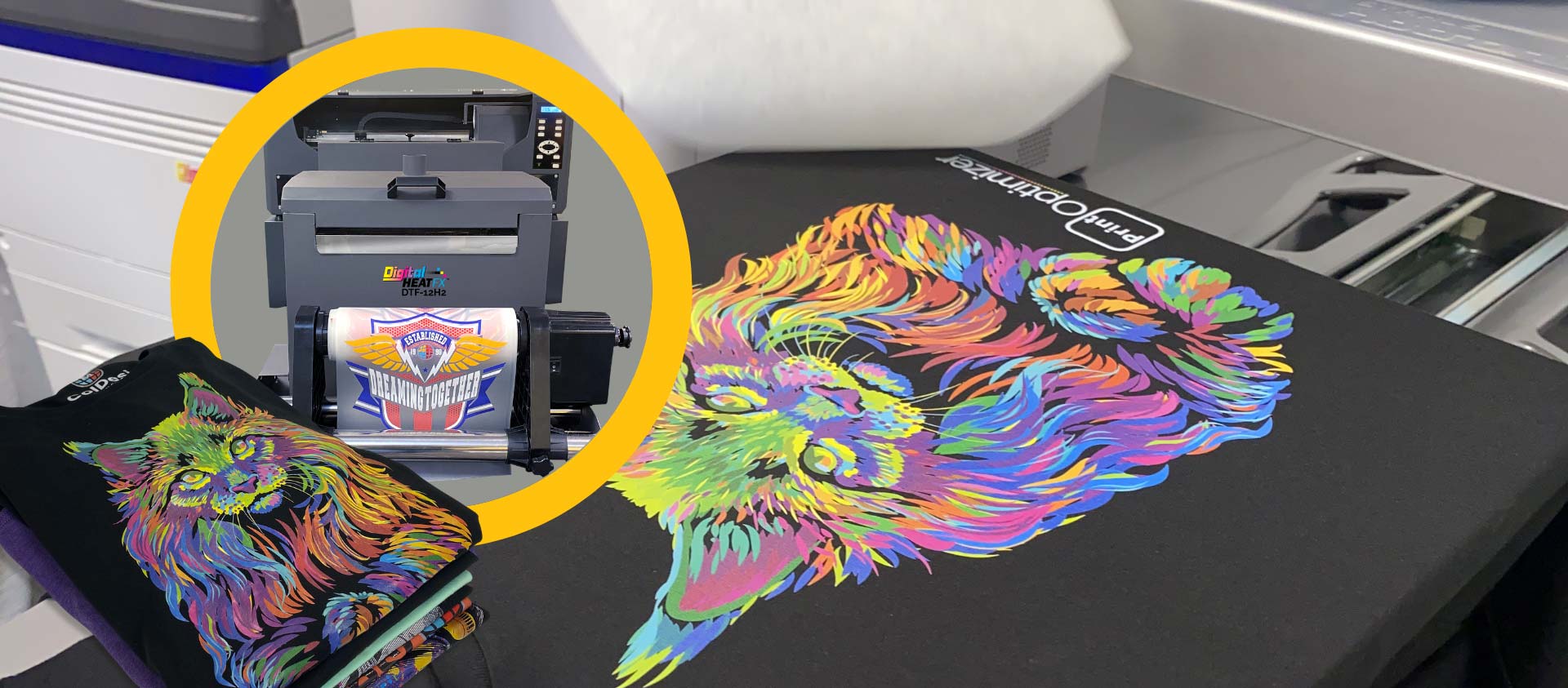Cutting-edge DTF Printing Solutions: Boost Your Apparel with Direct-to-Film Technology
Ultimate Overview to DTF Printing Techniques for Stunning Fabric Styles
Embarking on the trip of understanding DTF printing methods can open up a world of possibilities for developing aesthetically fascinating textile designs. In this overview, we will explore the elaborate details of DTF printing, from comprehending the basic essentials to unraveling advanced color techniques that can raise your layouts to new elevations.
Understanding DTF Printing Fundamentals
DTF printing, a process that entails transferring styles from an unique movie to textiles utilizing warmth and stress, forms the foundation of fabric printing strategies. This ingenious method enables high-grade, lively styles to be flawlessly transferred onto numerous materials with accuracy and information. The very first action in DTF printing involves producing or choosing a design that will certainly be published onto the textile. This style is then published onto a special film using a DTF printer, which makes use of particular dyes or pigments to make sure color precision and toughness.
The last outcome is a magnificent, resilient textile style that is cleanable, versatile, and resistant to fading. In general, comprehending the basics of DTF printing is vital for mastering this modern-day textile printing technique.
Selecting the Right Fabric Materials
Having established the foundational concepts of DTF printing techniques for fabric designs, the following vital factor to consider lies in choosing the appropriate textile products to complement this cutting-edge process efficiently. Additionally, the stretchability of these products can fit the warmth transfer process entailed in DTF printing without distorting the style. By choosing the appropriate fabric materials, developers can make the most of the possibility of DTF printing to produce stunning and lasting fabric designs.

Understanding the Printing Process
To succeed in DTF printing methods for textile styles, mastering the printing procedure is necessary for accomplishing consistent and high-grade outcomes. The temperature, stress, and duration of heat application need to be thoroughly regulated to guarantee proper bond of the design to the textile. By sharpening each of these steps in the printing procedure, designers can continually produce stunning and long lasting textile styles with DTF printing strategies.
Enhancing Designs With Shade Techniques

Additionally, exploring with shade slopes can bring a feeling of motion and fluidness to the style. By blending colors perfectly, a gradient impact can be accomplished, adding a contemporary and dynamic touch to the fabric layout. In addition, making use of shade obstructing methods can produce bold and striking visuals by juxtaposing various strong shades in unique sections of the design.
Moreover, including metal or neon colors can provide a one-of-a-kind and distinctive element to the fabric style, making it stand out useful link and exude a feeling of vibrancy. When tactically used, these color strategies can boost the general visual appeal of textile layouts, making them a lot more memorable and fascinating.
Troubleshooting Common DTF Printing Issues
After exploring different shade strategies to improve textile styles, it is important to attend to typical DTF printing issues that might emerge throughout the manufacturing procedure. One common problem is poor adhesion, which can arise from improper treating times or temperature levels. To settle this problem, guarantee that great post to read the healing setups are accurate and that the glue made use of is appropriate for the particular textile being published on. Another constant difficulty is color incongruities, where colors may appear in a different way than expected. This can be triggered by inaccurate shade profiles or settings in the printing software program. To tackle this, verify the shade setups and profiles to guarantee they match the intended design. Furthermore, problems with picture clarity and sharpness can happen because of low-resolution images or improper printing methods. To address this, constantly utilize top quality images and change the printing setups for optimal quality. By understanding these usual problems and implementing the required troubleshooting actions, Visit Website you can enhance the overall top quality of your DTF published textile designs.
Verdict
Finally, understanding DTF printing techniques is crucial for producing magnificent textile styles. By understanding the fundamentals of DTF printing, choosing the right products, and enhancing layouts with color strategies, one can achieve excellent outcomes. It is very important to troubleshoot usual problems that might emerge throughout the printing process to guarantee an effective result. With technique and attention to information, one can create unique and attractive textile styles making use of DTF printing methods.
DTF printing, a process that includes moving designs from an unique movie to textiles utilizing warmth and pressure, develops the structure of fabric printing techniques.Having actually developed the foundational principles of DTF printing strategies for fabric designs, the next essential consideration lies in choosing the ideal textile materials to match this cutting-edge process efficiently. By choosing the appropriate textile materials, designers can make the most of the capacity of DTF printing to develop magnificent and durable textile designs.
To succeed in DTF printing methods for fabric layouts, mastering the printing process is vital for attaining regular and top quality outcomes. DTF Printing. By developing each of these steps in the printing process, designers can consistently produce stunning and resilient textile designs with DTF printing methods